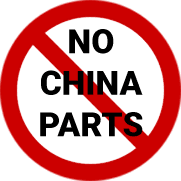What Are the Different Components of EFIS?
As the aviation industry has progressed through the years, much of the early technology used by pilots has been combined, and replaced with a single digital interface called the electronic flight instrument system (EFIS). This system is used in modern aircraft, and it combines several different sensors, circuitry, and software to effectively replace all mechanical flight instruments and gauges with a single unit. In this article, we will be discussing the different components of the EFIS in detail, so that you may better understand the crucial instruments which make up our modern “glass cockpit.”
In general, the EFIS combines a number of inputs with a set of display tools to convey the correct information to pilots. A typical EFIS uses important input data from the following sources:- VOR/ILS/MLS
- Attitude Heading System Reference (AHRS) or Vertical Gyro
- Compass System (Magnetic compass, IRS, or GPS)
- Radar altimeter
- Air data system
- Distance Measuring Equipment (DME)
- Area Navigation System (RNAV)
- Vertical Navigation System (VNAV)
- Weather Radar System (WXR)
- Automatic Direction Finder (ADF)
- Primary Flight Display (PFD)
- Navigation Display (ND)
- Display Select Panel
- Display Processor Unit
- Weather Radar Panel
- Multifunction Display
- Multifunction Processor Unit
Attitude Indicator: The attitude indicator depicts an aircraft’s orientation relative to the earth’s horizon. Typically, this data will be displayed as a small-scale plane surrounded by parameters indicating the aircraft position in comparison with the horizon. For reference, there is also a horizontal dividing line that runs through the middle of the display to provide a visible separation between land and sky, showing the vessel’s angle of bank.
Vertical Speed Indicator: An aircraft’s vertical speed can be presented on a display as a thin vertical ribbon at the outermost sides of an electronic attitude direction indicator (EADI). The value presented here is calculated based off of static pressure received from the pitot-static system.
Airspeed Indicator: By comparing static pressure to the compression created by an aircraft’s forward motion, an airspeed indicator can calculate the aircraft’s change in speed. Similar to the vertical speed indicator, this information is also gathered by way of the pitot tube alongside the internal components of the indicator, which is usually a device that is filled with mercury or other parts capable of measuring pressure.
Heading Indicator: This device is used with a compass to determine which cardinal direction the aircraft is heading. Heading indicators typically find direction by using a rotating gyro affixed along a vertical plane.
Turn Coordinator: The turn coordinator and the turn and slip indicator are two separate instruments that are contained in a single device. These components function as gyroscopic instruments, calculating an aircraft’s rate of change in the direction it is heading, as well as its slip or skid.
Altimeter: To measure how high an aircraft is from the ground, altimeters use static ports embedded in the plane’s body so that the surrounding air pressure will be directed into the altimeter. The small components in the device will expand or contract when exposed to changes in altitude pressure.
Aside from a primary flight display (PFD) or electronic attitude and direction indicator (EADI), the EFIS must also have either a navigation display (ND) or electronic horizontal situation indicator (EHSI). These devices give vital information about an aircraft’s speed, heading, flight plane, terrain, weather, distance, and more. As a part of the display, this information can be presented either with a 360 degree view around the aircraft or a 180 degree forward view alongside a weather radar image. In general, whereas the primary flight display gives valuable information about the plane, the navigation display depicts information about its surroundings for the purpose of safely flying through different weather patterns, terrain, and more.
In conclusion, all these devices come together to form a single digital interface which the pilot and copilot can use to effectively navigate the aircraft with regards to its speed, position, environment, heading, and more. If you are in the market for dependable aircraft mechanisms such as electronic parts for electronic flight instrument systems, ASAP Parts 360 has you covered. Operating as the leading supplier of aircraft hardware and networking parts, we go to great lengths to ensure the quality and authenticity of our products. As such, we only source from trusted manufacturers on our Approved Vendor List (AVL) and include their applicable trace documents with each order. Begin the purchasing process with use today to fulfill all your parts procurement needs with items of unbeatable quality.


